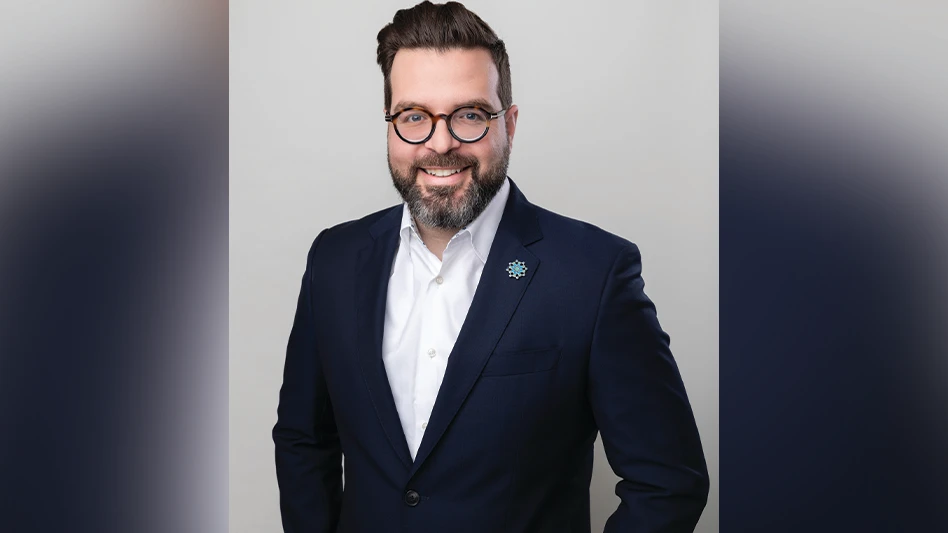 There’s a quandary afoot: How to assist municipalities in improving their individual recycling programs with education and outreach campaigns tailored to their communities and their “issues” without slowing impact and reach? Last I checked, there were more than 19,000 municipal governments. Even if we said 5 percent warranted recycling education and outreach intervention, that’s still almost 1,000 communities!
There’s a quandary afoot: How to assist municipalities in improving their individual recycling programs with education and outreach campaigns tailored to their communities and their “issues” without slowing impact and reach? Last I checked, there were more than 19,000 municipal governments. Even if we said 5 percent warranted recycling education and outreach intervention, that’s still almost 1,000 communities!
Within the education and outreach space, we typically see two different models: general recycling campaign materials, often aimed at children or at a population inclined to recycle, or very specific city-focused campaigns.
Curbside Value Partnership (CVP) has fallen into the latter category since we formed in 2003. We have prided ourselves in working hand in hand with city partners across the U.S. to develop best-in-class social marketing campaigns that address the recycling challenges within that city. We are about to launch an exciting campaign in Cleveland that has been jointly crafted to address the city’s program priorities. This model is the foundation of CVP’s success, and to be sure it remains an important tool in the CVP behavior change toolbox.
But moving into 2015, we have to ask ourselves, what do we know about a maturing curbside collection system and how do we deploy that knowledge in a way that builds scale and allows us to touch many more communities than we could possibly reach using the traditional city-by-city model?
Clearly, this tension between tailored and mass-produced warrants consideration, but is it an either/or question? At CVP, we don’t think so; building scale doesn’t have to sacrifice a custom look and feel or leave recycling coordinators without highly polished resources that speak to their residents.
Capitalizing on trends
Where do we see the future in resources for city program improvements? How do we build one education campaign—a “resource for all”—that is applicable to hundreds of communities? By capitalizing on trends—not fads but those shifts in the system that is material recovery. We talk with industry professionals regularly and see several aspects to the system that are either happening now or are on the immediate horizon in residential curbside recycling—we call these the three Cs or C3: carts, contamination and common suite.
The biggest thing to hit residential recycling since the expansion of curbside programs in the 1990s is the renewal of those programs using large rolling carts. Communities are actively looking for ways to swap out their existing bins or, if they didn’t have programs, they are starting them in carts.
Automated municipal solid waste service is an investment worth making, generating more tonnage, reducing workers’ compensation claims and improving citizen satisfaction and participation. Carts also provide more than five times the collection volume of bins, creating the perfect opportunity to integrate new material types into a program and inject some vitality in an aging system to reinvigorate participation (bigger, better, easier to use).
But carts also pose some challenges. First, they are expensive. At $50 per cart, plus truck conversions, the investment to make the switch easily can cost millions, even in relatively small communities. Given the pressure to keep taxes and fees low and the myriad of competing health and safety priorities in communities, this has slowed or stopped the switch to carts in markets of all sizes.
CVP has responded by hosting The Recycling Partnership, a public-private partnership that leverages relatively small infrastructure and outreach grants with technical assistance to unlock much larger public investments. Cities entering the partnership receive resources to ensure that high-quality education and outreach are included in their cart roll outs. They also receive technical assistance to ensure a smooth transition with open communication between the various agencies, haulers and material recovery facility (MRF) operators involved.
With scale in mind, The Recycling Partnership funding partners and CVP also have invested to address the second challenge with carts: In cities financing carts themselves, the upfront capital costs don’t leave much in the budget for education and outreach, so we need a mechanism to assist them even if we can’t provide a direct grant. Enter Community Access = Recycling Tonnage, or CART. With an anticipated release date of January 2015, CART will provide resources for the cart conversion trend. CART will include a minimum of two distinct campaign platforms for communities converting to or starting with large roll carts. We are currently wrapping up photo shoots of all major carts manufacturers to ensure that cities can adapt the art files to their specific community down to the brand and color of their cart. In addition, we are completing an operational assistance guide, which will walk communities through the various considerations in the successful planning, procurement and execution of carts.
By making one investment in designing around the cart trend, we can save municipalities thousands of dollars in developing the materials on a case-by-case basis and help ensure consistency of high-quality messaging. We know this matters; in cities that convert to carts without solid communications plans and education components, we see high rates of cart refusal and contamination, which leads us to our third challenge often connected to carts and to our next design trend: material contamination.
Cleaning up contamination
Contamination seems to be on everyone’s mind lately. ReCommunity has issued a quality alert, and Rhode Island municipalities will now be charged $250 for every load of contaminated recycling that arrives at Rhode Island Resource Recovery Corp. China’s Operation Green Fence is something most Americans have never heard of, but it is forcing all of us to up our recycling game. But, beyond that, we see carts being used as garbage overflow. No matter how badly we want them to be, bowling balls are not accepted at MRFs, and “wish-cycling” helps no one.
As Mike Pope, director of procurement at Sonoco Recycling, notes, “We believe that the collective need to raise recovery rates must also incorporate a strong focus on quality as this is one of the greatest threats faced by the recycling industry. Contaminated materials contribute to unsafe working conditions, increased disposal costs and a reduction in the quality of end-market material. Overcoming this triple threat is a key focus of our educational efforts and is one that needs to be front and center with the public, municipalities and recyclers alike,” Pope continues.
In late 2014, CVP began to take on contamination directly. A newsletter, webinar and other resources were in the works. We began working with our partners to make sure that what goes in the cart is correct and that it’s prepared right with a focus on how to recycle (clean and dry) versus a long list of nos. One way to make this easier? By creating a common vernacular and list of materials that are accepted in the cart, something we call the “common suite,” whether in Atlanta or Portland.
Finding common ground
Recycling advocates have been calling for a common suite of materials as a way to maximize the power of cart-based programs (More space for more things!) and address contamination (But what are those things and how do I prepare them?!). Carts are more than five times larger than bins, creating space for what our Executive Director Keefe Harrison calls the “new normal” of recyclables, such as cartons, empty aerosols, plastic containers, tubs and lids and bulky rigid plastics.
The American Chemistry Council, Washington, together with Moore Recycling Associates, Sonoma, California, recently released plastic recycling terms and tools to aid in developing a common language around plastics. Broadly recognized as an important step forward, we also need to develop a common platform of materials collection regionally and even nationally. This would help immensely in normalizing expectations around what is recyclable, help to secure markets for MRFs and limit the frustrations that communities face when they have to continuously update their “what to recycle” lists to reflect MRF-directed changes.
Recycling is a habit that is slow to change. The more we do to underpin the type of recycling we want across the nation and support that messaging with campaigns and resources that reinforce an inclusive set of material types, the higher and cleaner the yields we can expect. Moving into 2015, CVP will be working publicly and behind the scenes to drive toward this goal. Stay tuned.
Promoting education
Beyond the C3 trends, CVP will continue to promote quality education in cities across the U.S. While you won’t see our logo on the campaign materials, in Cleveland we will encourage citizens to complete One Simple Act and recycle regularly and properly. Via the Recycling Partnership, we will work in Richmond, Virginia; Columbia, South Carolina; and Florence, Alabama, to support important system changes when they switch to carts in 2015. These cities will put the CART campaigns to the test and help to fine-tune these “tailored campaigns for the masses.”
Requests for proposals will be distributed in 2015 to further develop and test our trend-based model. We look forward to sharing the work we love with many more communities as we do.
The author is project director at Curbside Value Partnership, www.recyclecurbside.org, a national nonprofit with a track record of increasing recycling rates. She has worked in the natural resource field since 2003 and was formerly a senior consultant at Resource Recycling Systems and an environmental scientist with the U.S. Environmental Protection Agency.

Explore the January 2015 Issue
Check out more from this issue and find your next story to read.
Latest from Recycling Today
- Hyundai says it will make steel in the US
- APR announces Recycling Leadership Award winners
- Glass Half Full opens glass recycling facility in Louisiana
- AmpUp partners with Roundtrip EV
- Global Recycling Day event supports Pittsburgh school's recycling efforts
- President signs executive order on critical minerals
- Registration opens for Scrap Expo 2025
- Toyota opens ‘circular factory’ in UK





